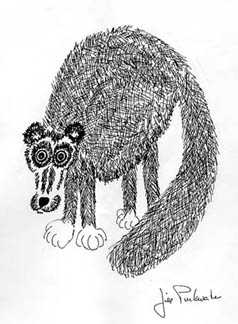Table of Contents
*
F.I.D.O.: Barry Salovaara and Tina Portman
*
Barry of the Midnight Sun
*
The Fan Hitch Contributor Wins Maxwell Award
*
Ivakkak: Encouraging Purity in Nunavik ISDs
*
Games People Play:
Saving the Sled Dog or Saving the Show Dog
*
Coppinger Comments Prompts ISDI Rebuttal
*
News Briefs
*
Media Watch
*
Behaviour Notebook: Building a Team
*
IMHO: The Sernix, a Fable
Navigating This
Site
Index of articles by subject
Index
of back issues by volume number
Search The
Fan Hitch
Articles
to download and print
Ordering
Ken MacRury's Thesis
Our
comprehensive list of resources
Talk
to The
Fan Hitch
The Fan
Hitch home page
ISDI
home page
Editor: Sue Hamilton
Webmaster: Mark Hamilton
Contents of The Fan Hitch Website and its publications are protected by international copyright laws. No photo, drawing or text may be reproduced in any form without written consent. Webmasters please note: written consent is necessary before linking this site to yours! Please forward requests to Sue Hamilton, 55 Town Line Rd., Harwinton, Connecticut 06791, USA or mail@thefanhitch.org

"The Sernix" original illustration by Jill Pinkwater
The Sernix, a Fable
by Mark Hamilton
Once upon a time in the kingdom of Potu there was an animal unique to all the world: the Sernix (Scientific name Dentoid iglus). It was a wonderful animal, the size and shape of an armadillo, covered in soft, short, luxuriant fur and, like the platypus, an egg laying mammal .
Now Potu was a land remote to the rest of the world as well as a land of great beauty. Visitors came from near and far to enjoy its splendor. Since the Sernix, at that time, lived in great numbers throughout the kingdom, visitors were always sure to see them. When those visitors returned to their homes they told friends many stories of the Sernix, and soon the animal was known throughout the planet.
The Sernix had more in common with the armadillo than just its size and shape. They too were very plentiful and moved rather slowly as well, so they were often found dead in the road-ways of the kingdom. Also, as with the armadillo, not all the citizens of the kingdom liked them. There were, in fact, a few citizens who even thought the Sernix should be eliminated from all the lands of the kingdom.
Because not all the people of the kingdom valued the Sernix, and because so many died on the roadways, a time came when the Sernix was no longer seen throughout the kingdom. In fact, the species was on its way to extinction. But a couple of the residents took it upon themselves to see to it that the Sernix survived, and a number of years later it could once again be seen in much of the kingdom. And the people said it was good.
Regrettably, the fortunes of the Sernix had not actually been reversed, and several years later their numbers once again were in decline. This time there was a whole group of people willing to help the Sernix. They called themselves the Society of Sernix Admirers. They gathered together and developed a plan. They knew there was no guarantee of success, and there was little time to act as only a very few Sernix remained in existence.
But other people were noticing the decline of the Sernix as well, among them an egg collector, a politician, a professor and a museum director.
The museum director used his connections to get a pair of Sernix which he put on display as a rare and endangered species. They soon died so the director had them stuffed.
The politician asked his aides to find out if any of the people in his district cared about the Sernix as he was facing re-election in the next year.
The professor submitted fifteen grant requests to various agencies and endowments detailing his plans to study the status of the species.
The egg collector, who desperately wanted to add a Sernix egg to his collection, realized his opportunities could soon be coming to an end. So he found and raided the last known Sernix nest, taking two of the four eggs.
The next spring the Society of Sernix Admirers announced there were no Sernix left on the planet. The species was extinct. The politician said he could have saved the Sernix, if only he had known the species was so endangered. The professor said it was really a shame that another species was extinct, but that it was the inevitable consequence lacking real commitment (money) from the politicians. The egg collector was pleased that he got eggs for his collection before the species disappeared into oblivion. The museum director was pleased that he had a nice, fresh mounted pair of the now extinct species for visitors to come, and pay to see. And the children of Potu asked their grandparents why there were no more Sernix, and what they had been like. And as they listened to their grandparents' stories of the Sernix they saw tears in their grandparents' eyes.